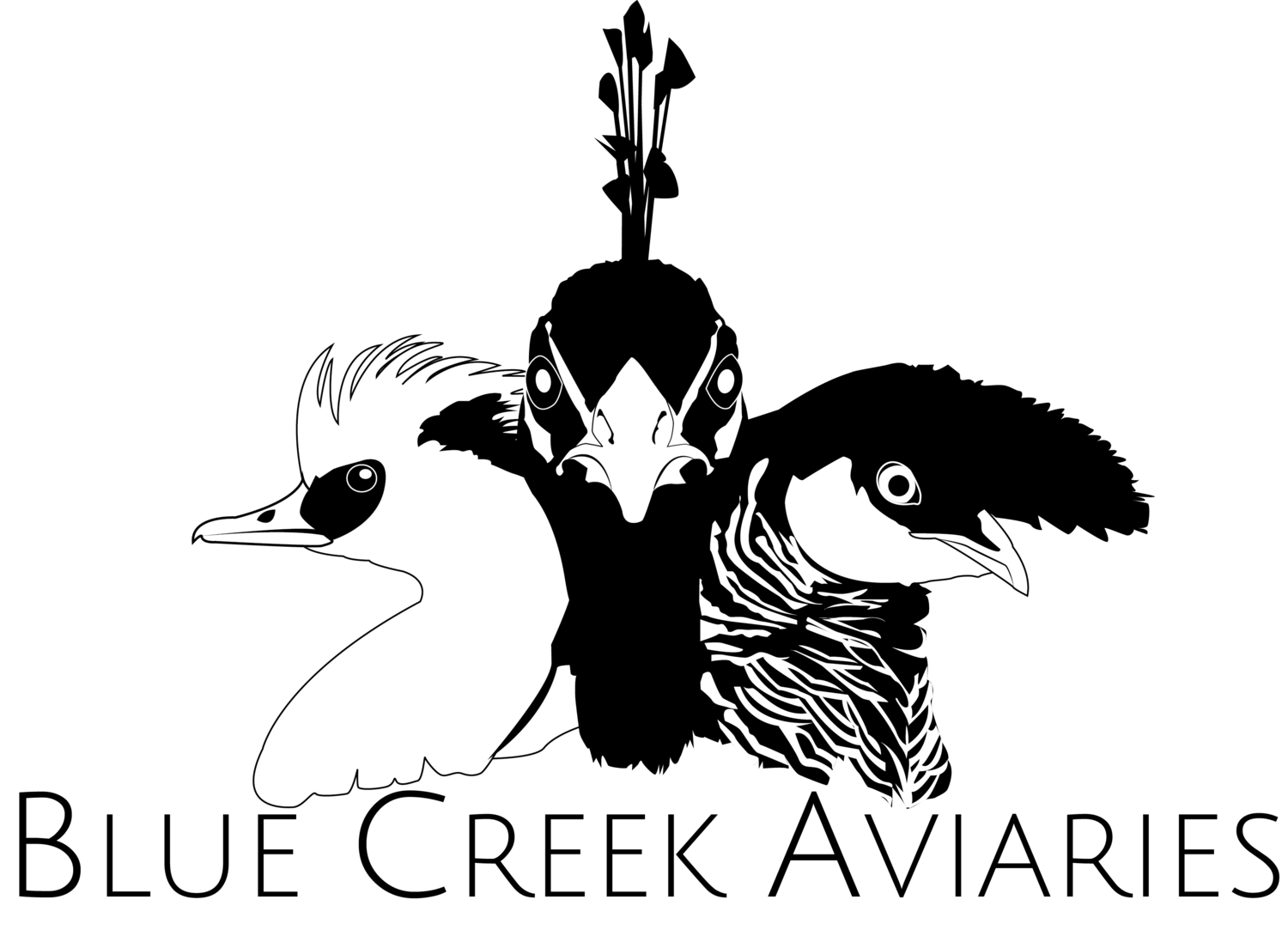Peacock Pheasants
Peacock pheasants are no longer a part of the collection as of 2020. This page will remain for reference purposes.
Peacock pheasants belong to the genus Polyplectron, which means "many spurs." It is characteristic of peacock pheasants to have one or more sets of spurs on their legs. There are eight species of peacock pheasants that are as follows: grey, Germain's, Palawan, mountain (Rothschild's), Hainan, bronze-tailed, Malayan, and Bornean (Hainan and Bornean are not represented in U.S. aviculture). These pheasants inhabit various parts of Asia; therefore, they are tropical birds that require heat in northern climates. There is noticeable variation between the species, but the males of each species have moderately-sized tails marked with vibrant ocelli. During their breeding displays, the males open up their tail, just as a peacock fans his train.
Peacock pheasants are monogamous and should be kept as pairs. Since they are such small birds, it is a good idea to keep them in their own individual pens. With that said, I have had grey peacock pheasants do well in large aviaries with various species, and have seen similar situations at other collections. Peacock pheasants do not need expansive aviaries as some pheasant species do, which is a plus. Peacock pheasants have many additional pros, but they are certainly not a beginner's pheasant. In the wild, they are insectivores, so it is a good idea to offer captive birds mealworms. My peacock pheasants receive commercial diets along with a mixture of fruits and vegetables, and I have noticed that my birds at least tend to be more picky in regards to what they eat. The females lay small clutches of two eggs (some species just lay one egg per clutch), though they can produce a few clutches in a given season if they do not incubate and rear their own young. The chicks are very small when they hatch and may require additional attention to entice them to eat. This can be accomplished by adding an older chick or a chick of a different species (granted that they are not too large or going to bully the peacock pheasant chick) to the brooder, which can be removed once they are eating well. Once an individual has had success breeding pheasants and is familiar with their husbandry needs, then is it appropriate to venture into peacock pheasant species. I recommend beginning with the grey peacock pheasant, as they are readily available, the most affordable, and more forgiving than other peacock pheasant species. Each species has something special in store and it's certain that one cannot get bored by working with peacock pheasants.
Grey Peacock Pheasant
Grey peacock pheasants (Polyplectron bicalcaratum) are considered Least Concern by the IUCN. They are native to southeast Asia. In aviculture, they are the most commonly kept peacock pheasant species. Being a tropical species, they are unable to take the cold very well, although they are the most cold-hardy peacock pheasant. Some northern breeders house them indoors out of the elements without heat and report that their birds fare well, but I personally heat mine during the winter. Being a tropical species, they can lay year round, though mine begin to lay their first clutches early winter. Their clutches consist of two eggs, which have an incubation period of 21 days. I have not found grey peacock pheasant eggs difficult to incubate. The chicks will require additional care to raise, whether it be through a teacher chick as detailed above, or simulating the female’s behavior, in which she picks up food in her beak and calls the chicks to eat the food item. There are numerous ways to be successful with grey peacock pheasants, so it comes down to coming up with a method that works for you.
Palawan Peacock Pheasant
Palawan peacock pheasants (Polyplectron napoleonis) are classified as Vulnerable by the IUCN. They are native to the island of Palawan in the Philippines. They are undoubtedly one of the most colorful peacock pheasant species. Palawan peacock pheasants can be further classified as single-barred or double-barred. This nomenclature refers to the facial markings on the head of the male. The single-barred males only have a circular, white cheek patch, while the double-barred males have a white cheek patch and a white eyebrow stripe. There are also other slight phenotypic variations, but many captive birds are a mix of the two. It is increasingly harder to find prime examples of either, especially the single-barred, as double-barred Palawan peacock pheasants seem to be more commonly kept. This species requires heating for the winter months in a northern climate. Also a tropical species, they tend to start laying early winter. Their clutches consist of two eggs, which are incubated for 18-19 days. Palawan peacock pheasants are quite small as adults, and their chicks are no exception. When raising the chicks it is especially important to monitor for any negative interactions between teacher chicks and the peacock pheasant chicks.
